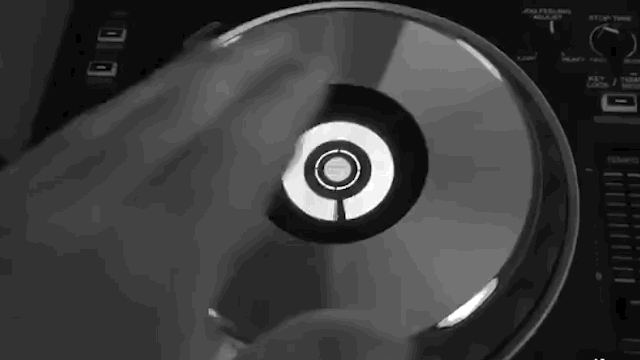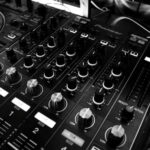
A lot of you probably know what a rewind is. But did you know that most DJs aren’t calling it that anymore? The rewind is now called the reload. The reload is one of those key techniques in a DJs grab bag of fun that can’t really be used too often in the course of a gig. But when it is, wow, the crowd loves it! When was the last time you used it?
Love them or hate them, doing a rewind is a big part of dance music culture and DJs, and indeed random people in clubs are still doing cheeky reloads. In this article, guest contributor Harold Heath examines the history of one of DJing’s most divisive practices.
What’s A Rewind, Anyway?
Peak time, a packed club, a DJ deep in the mix cues up the next tune, an absolute killer. They mix it in to roars of approval from the crowd, then stop it dead and speedily rotate the platter of the deck backwards, rewinding the tune back to its beginning. Everyone reaches for the ceiling, the air is full of whoops and whistles, the track is dropped again to an even more rapturous reaction, the room for a moment united in sharing that unique, collective joy you only get on a decent dance floor. You have just experienced a rewind.
The rewind, rebranded in the last few years as the reload, is the act of stopping a song whilst it’s playing and then rewinding it back to the beginning to play it again. It’s one of the most visceral techniques available to the DJ. The actual sound of it is piercing: it’s backwards, high pitched, and usually really loud. If nothing else, a rewind is always a showstopper and of all the weapons in the DJ’s arsenal, the rewind is utterly unavoidable for the punters; they can’t just style it out. If a DJ does a rewind, the crowd pays attention.
MC: “I say RELOAD, you say now! RELOAD”
Crowd: “NOW”
MC: “RELOAD
Crowd: “NOW”
MC: “Selecta pull on that, pull on that”
– Urban Dictionary
The beauty of the rewind is that it’s a response from the DJ to the howls of excitement from their crowd and often a response to the MC too. It’s the nearest thing to a conversation between DJ and punters – and this is the crucial aspect of the rewind. It’s direct and genuine communication between the crowd and the DJ, because a tune only gets a reload if it’s so good, for that moment, for that crowd, that it can be stopped and reintroduced to even greater impact. A good rewind, one performed because the DJ could feel that the crowd wanted it, is authentic rapport, DJing at its purest essence.
So Where Did The Rewind Come From?
The rewind is just one of the many DJ techniques gifted to dance music by Jamaican sound system culture. The rewind was first practiced by West Indian ‘selectors’ (what Europeans and Americans would call DJs) and emerged in the late 1960s. Various accounts suggest that in 1967 radio station owner Ruddy Redwood was given, either by accident or by design, a dub plate of a song from Duke Reid’s Treasure Isle studio, which engineer Byron Smith had failed to record the vocal on. It proved to be so popular in the dance that weekend it was played several times in succession – the dancers had demanded it be rewound.
Government-encouraged immigration to the UK from the West Indies in the 60s and 70s bought sound system culture to the UK. And there the rewind stayed, in reggae clubs and house parties, seeping into British-built sound system culture. The rewind remained a mainstay of reggae sound systems through the 70s and into the 80s. Big tunes might get rewound and restarted several times in succession if the crowd demanded it, but also to allow the MC (who, confusingly, in sound system culture is called the Deejay) to continue chatting on the mic.
Here’s a nearly two hour video of the Merritone Sound System set up in Southall Park in London in 1987 – a great sense of the vibe and culture at the time:
The act of rewinding was further developed by Hip Hop DJs, where the rewind was generally used not to re-launch a song, but to transition from one to another. If we’re going to be picky, then strictly speaking this technique is a spinback rather than a rewind, as the song being rewound isn’t then started again, instead two tunes are mixed together and then the outgoing one is spun back, often maintaining the beat throughout. The spinback was added to the particular suite of mixing and cutting skills being developed by Hip Hop DJs and was therefore present in many early rave DJs’ skillsets as well.
Hardcore, You Know The Score
The early 90s rave scene was when the rewind started to be heard outside the reggae scene. The UK was taking the Detroit techno template and doing very strange things with it; they sped it up, attached breakbeats to it, adopted an anything-goes approach to sampling and a sonic ethos that became ever more twisted with each months’ new releases. And once the tempo had reached a certain point so that it was “simultaneously fast and slow” (Gilbert & Pearson, Discographies, 1999), sampling reggae records at double speed was the most obvious thing in the world. Dub basslines and the lyrics of Barrington Levy et al starting ringing out underneath the frenetic breakbeats in the raves.
There’s a clear line of influence from Kingston Jamaica straight to, for example, the Four Aces club in Dalston which housed the legendary hardcore night Club Labyrinth (see the above video compilation) and where you would hear rave DJs perform rewinds, to the ecstatic response of the crowd. Club Labyrinth was in multi-cultural Dalston, East London and was one of the ‘profane shrines’ (Simon Reynolds, Energy Flash, 1998) of the era, a sprawling venue, formerly a West Indian drinking club which had featured appearances from reggae acts like Desmond Dekker, Jimmy Cliff and Dennis Brown. The rewind was already at home at the Four Aces, and it quickly became part of the hardcore ravers scene there. Lots of rave and hardcore DJs had West Indian backgrounds, so incorporating rewinds into their rave DJ sets was a logical progression.
Meanwhile, just a couple of miles down the road from Labyrinth was the legendary Telepathy raves in Stratford, co-promoted by Bret Telepathy:
“We…come from West Indian backgrounds. We grew up here. The Reggae flavours we incorporated, things like the MC because that what we were used to. Things that are industry standard now like rewinds – we created that at Marshgate Lane. We said, “Tell ‘em “Stop the tune. Rewind it.” (Brian Belle Fortune All Crews, 2004).
It’s at this crossover point – the mutation of hardcore rave into jungle – that the rewind made the jump from its reggae roots to the dance floors of the UK’s rapidly expanding underground dance scene. MC GQ (who used to partner DJ Randall at the seminal jungle club AWOL) also puts in a claim: “I don’t care what anyone says. We were the first people to rewind the whole mix.” (Brian Belle Fortune All Crews, 2004).







0 Replies to “The History of the Rewind”